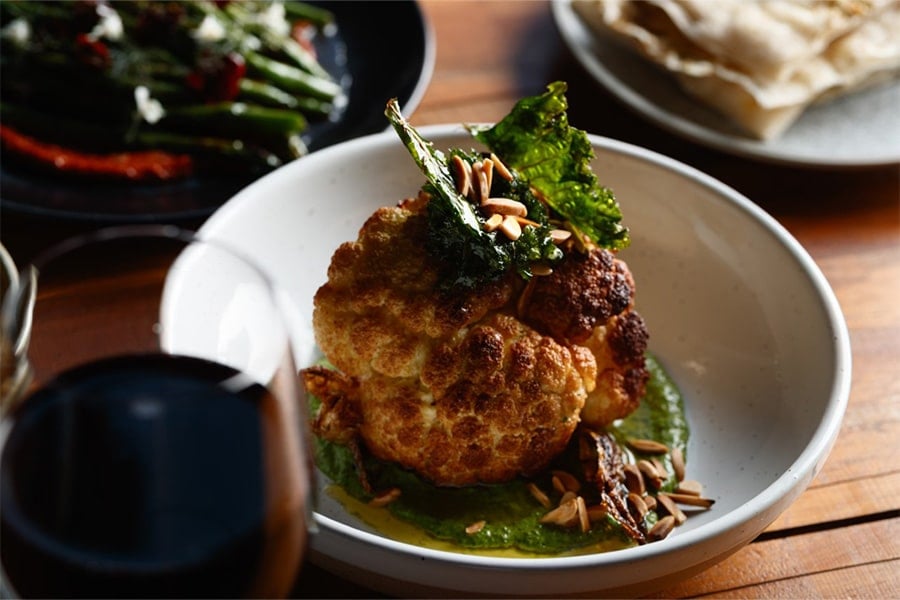
For tens of thousands of years, the rich soils and plentiful waters of the Northern Rivers of New South Wales have nurtured human civilisation and astonishing wildlife. Now, though, sudden change is here, transforming landscapes and savagely interfering with human lives.
Fifteen years ago, the federal government’s Garnaut Review into climate change warned that the impact of global heating would include heavier rainfall events and flooding. Since that time, numerous other high level reports have followed, repeatedly cautioning that storms and floods would become more frequent and intense as climate change worsened. In February 2022, these warnings became manifest in unprecedented rain and flooding that inundated towns across the Northern Rivers region, drowning the volcanic cup where once the earth was made of fire.
For those of us at a distance, the images of the catastrophe were astonishing and uncanny – the roofs of homes and businesses seeming to float like giant lily pads, supporting human beings and their pets, desperate to escape the rising waters. The storms were intense, unprecedented, prolonged – and in some areas – repeated. Two-once-in-blue-moon floods occurred twice in the same month.
Consistent across the stories that are told from those intense drowned days is that the overwhelming response of the community represented the very best of human beings. Neighbours, friends and strangers helped one another and worked together, for the common good, in the face of the storm.
And then came the aftermath. Months of clean-up, uncertainty and filling in of endless forms. Nervous over-the-shoulder glances at the rivers and the skies and the years to come. Temporary beds, short-term accommodation, patch-up fixes. The trajectory of thousands of lives were savagely abridged in the wake of flood waters driven by the amoral corporate greed of fossil fuel corporations, and the failure of politicians to act in the public interest.
Deep frustration now takes root in the disturbed towns. Why are people being left to suffer? Why are citizens of Australia being turned into climate refugees in their own country? Where is the universal safety net? After all, it is not as if the politicians and the corporations didn’t know what was coming...
The people you will meet below in this portrait gallery were incredibly generous with their time, sharing their stories and opinions on flood and recovery – and allowing their pictures to be taken. I am deeply grateful for the trust. These faces and lives are witness to what the coal, oil and gas corporations have done to us. They search the consciences of the political and business leaders who have failed us. They warn all of us of what is to come.
And they remind us of our agency, urging us to take action – take action now, at emergency speed and scale to secure a safer future, for all our sakes, to secure an earth capable of nurturing life in all of its magnificent diversity.
— David Ritter, CEO of Greenpeace Australia Pacific
Eli Roth and partner Jessyanne Shields
Severely impacted by floods, Eli was waiting to be rescued from the roof of his house where he waited in the rain for five hours watching the water rise. He and his partner Jess are now rebuilding, but want to leave Lismore as the risk of the house flooding again is too high.

"We bought the house and we love it, but we can’t do this again… Will everything just end up covered in mud on the street again?... My couch floated out through the window. There’s still one of my jackets in the tree over there... These catastrophic one-offs seem to be becoming pretty frequent."
Anna Dicker
Anna is the president of the Australian Seabird & Turtle Rescue in Ballina, NSW. As the rains fell and the river level rose, parts of the rehabilitation facility flooded, causing major damage to the facilities.

"Water came through. Contaminated the aviary. Rusted all the premises. Wiped out filtration equipment. For four months there was no salinity in the river so we had to manufacture our own salt water."
Chris Binge
Chris is the CEO of the Jali Local Aboriginal Land Council. He led the evacuation of the approximately 200 Bundjalung people who live on Cabbage Tree Island, located on the Richmond River, south of Ballina. He continues to help his community find long-term accommodation. Whether the Cabbage Tree Island community can be rebuilt remains in doubt.

"We are the forgotten community. We were left to our own peril... I got a phone call at 5am in the morning. It was a call from SES in Lismore. They said 'you know what is happening upriver? It’s coming.' I had no choice but to jump in my car because the SES said that they wouldn't be there."
Louise and Bec
Louise: Lived in a caravan with her husband, 13 year old son, and their Labrador when the floods hit.
Bec: Her home in Mullumbimby was destroyed by the floods.

L: "At the time of the floods we were living in a caravan, so we lost it all. It’s not the government that helped my family, it’s the community, who raised money for a new caravan."
B: "We lived in a two bedroom asbestos house. That house was my base. I lived there for 12 years. I valued my wealth by how many times I talked to my neighbours on a daily basis. It takes years and years to build this. You feel naked without it."
Mieke Bell
President of the Winsome Hotel & Lismore Soup Kitchen. The hotel serves as a men’s shelter and was heavily impacted by the floods. One year later, it is back operating for meal services and homeless accommodation. Mieke is pictured standing on the balcony that served as a docking point for boats to evacuate people.

"We evacuated all our residents on the Sunday night. The top balcony stayed above the water and became a rendezvous point for little boats. It was lapping at the floorboards here."
Richard Hughes
A landslide cut off Richard's home from all roads, making it inaccessible. In the image he is standing on the rubble separating his home from the closest road.

"Nobody ever thought this would happen. Did I think I’d be a climate refugee in 2023? No."
Julie Williams and Jaime Cooper
Julie: Manages the Mullumbimby & District Neighbourhood Centre which provided flood relief and coordination for community members.
Jaime: Works at the Mid-Richmond Neighbourhood Centre, which coordinated the flood response in Woodburn, Coraki, and Broadwater.

Julie: "Access to food was hard but we had a community pantry. And frozen meals pantry. And then the community pitched in. It is a community full of love."
Jaime: "In the crisis, everyone helped everyone… one year later, everyone is looking at what others have achieved. People with networks have gotten further in their recovery. Those without, have not. We still have participants in houses with dried mud and tarps. One family used all their money to buy what they could afford – a really shit caravan – and every time it rains, the roof leaks."
Joel Orchard
Joel is the co-founder of WardellCORE, a community-centred recovery and service hub focused on wellbeing and social care.

"It was a systems disaster as much as it was a natural disaster."
Anastasia and Julia Vanderbyl
The sisters Julia and Anastasia are regenerative farmers. They documented how the floods changed the land around them and were cut off from the next town for weeks.

"The torrenting water cut every road and entrance, leaving us completely cut off from the world for weeks. But what we found in this was the power of the community that surrounded us. Families dug landslides by hand, uncovering roads. Teenagers rode their mountain bikes around the broken roads checking on their neighbour’s welfare. The community built pulley systems over broken bridges to receive food and medicine. There was a constant trail of hikers traversing the hills with food on their backs.
TV and literature had always told us that under crisis, society would collapse — that humans are selfish and greedy. But in disaster, we found the opposite."



